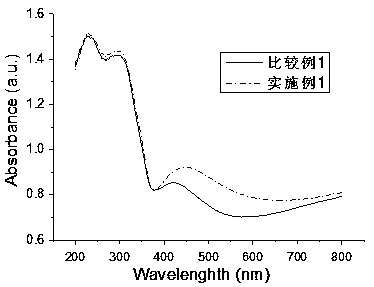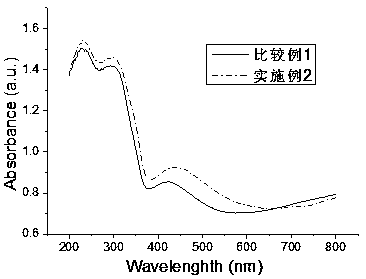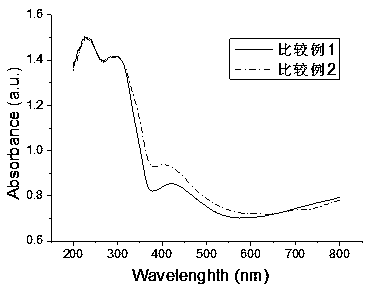Preparation method for manganese modified titanium dioxide nanotube to enhance photoelectric response
A titanium dioxide, photoelectric response technology, applied in electrodes, electrolytic components, electrolytic processes, etc., can solve problems such as low quantum yield, easy recombination, and large energy gap width
- Summary
- Abstract
- Description
- Claims
- Application Information
AI Technical Summary
Problems solved by technology
Method used
Image
Examples
Embodiment 1
[0031] The first step is pretreatment of titanium sheet. A titanium sheet with a size of 20 mm × 15 mm × 1 mm was cut, and the titanium sheet was polished step by step to 1200# with waterproof sandpaper, cleaned with deionized water and ethanol, and soaked in 0.02 M hydrogen fluoride aqueous solution for 30 s under ultrasonication.
[0032] The second step is constant voltage anodizing. The anodic oxidation electrolyte is a solution system of ammonium fluoride dissolved in glycerol and water, the mass percentage of ammonium fluoride is 0.5%, the volume ratio of glycerol to water is 1:9, and the total mass percentage is 100%. The oxidation voltage was 20V, and the oxidation time was 2 hours, at room temperature.
[0033] The third step is secondary oxidation. After the second step of anodic oxidation, the concentration of Mn(II) ions is 0.05 mol L -1 The secondary oxidation was carried out in aqueous solution, the oxidation voltage was 5 V, and the oxidation time was 5 minut...
Embodiment 2
[0036] The first step is pretreatment of titanium sheet. A titanium sheet with a size of 20 mm × 15 mm × 1 mm was cut, and the titanium sheet was polished step by step to 1200# with waterproof sandpaper, cleaned with deionized water and ethanol, and soaked in 0.02 M hydrogen fluoride aqueous solution for 30 s under ultrasonication.
[0037] The second step is constant voltage anodizing. The anodic oxidation electrolyte is a solution system of ammonium fluoride dissolved in glycerol and water, the mass percentage of ammonium fluoride is 0.5%, the volume ratio of glycerol to water is 1:9, and the total mass percentage is 100%. The oxidation voltage was 20V, the oxidation time was 2 hours, and the oxidation was carried out at room temperature.
[0038] The third step is secondary oxidation. After the second step of anodic oxidation, the concentration of Mn(II) ions is 0.05 mol L -1 The secondary oxidation was carried out in an aqueous solution with an oxidation voltage of 10 V...
PUM
 Login to View More
Login to View More Abstract
Description
Claims
Application Information
 Login to View More
Login to View More - R&D
- Intellectual Property
- Life Sciences
- Materials
- Tech Scout
- Unparalleled Data Quality
- Higher Quality Content
- 60% Fewer Hallucinations
Browse by: Latest US Patents, China's latest patents, Technical Efficacy Thesaurus, Application Domain, Technology Topic, Popular Technical Reports.
© 2025 PatSnap. All rights reserved.Legal|Privacy policy|Modern Slavery Act Transparency Statement|Sitemap|About US| Contact US: help@patsnap.com



